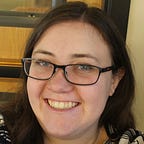Comparing Photo Stitching Software
Abstract: I looked at four panorama software. I compare and show an unadjusted set of images, showing you how each compares straight from the photo stitching software.
1. PTGUI
With the PTGui photo-stitching software, I created a professional-grade spherical panorama. It was quick and easy, and it looks ready for a client. This program is by far the very best software I found and tested. I recommend it for all of your panoramic needs.
As shown in the above image, the trial version has a watermark but is otherwise fully functional. The one-time payment for this program is $143 for personal use or $283 for professional use.
The professional version allows you to create spherical, gigapixel, HDR, or little planet panoramas. It offers many useful features, such as automatic or manual stitching, live preview, support for JPEG, TIFF, raw, and PNG, etc. It also supports HDR stitching, masking, viewpoint correction, vignetting, and exposure and white balance correction.
Out of all the other software I tested, this one was hassle-free and incredible to use with no confusion. It was also the only one to handle the up-and-down shots.
2. Adobe Photoshop
Adobe Photoshop is an all-around photo editing software. It does some things better than others. Its use of photo-stitching is simple and works for basic side-by-side images. The up-and-down shots either didn’t connect or were put in the wrong place.
Adobe Photoshop has a 30-day trial. The paid version is $599.88 a year. This price is fairly worth it for all of the programs included within it. However, if you only need the software for photo-stitching, I would not recommend buying the Adobe programs.
Within the photo-stitching part of Adobe Photoshop, there are six different panorama layouts: auto, perspective, cylindrical, spherical, collage, and reposition. For the above image, I used auto.
3. Hugin
It’s free and cross-platform, and it’s the best free option I tested, but it does not compare to PTGui.
It’s built upon software called Panorama Tools. Previous versions of Hugin were simpler. But now, the developers have added more capabilities, such as the ability to manually change control points and projection.
Its interface is functional but not slick or especially refined. The use is functional, but it takes some time to figure out how to use the program. However, it does what you ask it to do. Hugin is free, and there are versions for Windows, Mac, and Linux.
This program works best for side-by-side images. As you can see from the above image, the top and bottom photographs from my 720 panoramas don’t merge into the panorama at all.
4. AutoStitch
I tried AutoStitch, which could do a better job of creating a panorama. It focuses on adding the images around the bottom image. If I remove the top and bottom photos, this is perhaps just as good as the other programs at stitching but has fewer options to adjust anything.
Autostitch stitches the images with no other way for you to control the look and feel of it. It does the stitching by finding points of reference and putting them together through that. There is no control whatsoever. So, although it does an okay job, I would not recommend using it because there is no customization.
What I Learned
PTGui was the best software for creating Panoramas. It produces a high-quality image while offering users the most control options. It also looks professional. Although it is one of the most expensive options, I would still highly recommend it, especially because I was not able to find usable free software to create a 720 Panorama. I think that you get what you pay for.
